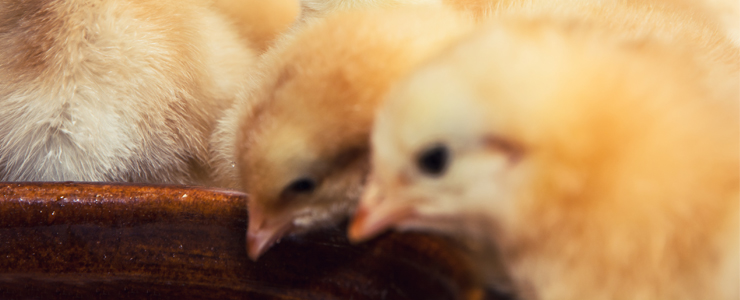REARING AND FEEDING CHICKS
Day-old chicks must be handled with care. A flock that gets off to a good start is easier to control. It has a higher body weight at the start of the rearing process, is more uniform in size, has a better health status and reaches genetic potential more easily. There are a number of basic things for you to bear in mind;
Before chicks arrive, check that everything in the house is working properly: right temperature, there is enough fresh air coming in, feed and water and there is enough light.
Read also: Vaccine administration to Poultry Flocks
Feeding
Feed is the greatest expense in commercial poultry establishments, therefore it is important to purchase feed from a reputable miller who can assure consistency in the quality and performance of the feed. Variations in the nutrient composition and quality of feed ingredients result in variations in feed composition and texture. These are due to variations in raw feed ingredients from season to season and even shipment to shipment.It is important to avoid mixing feeds from several millers, adding other protein sources (fish meal etc.) and mineral salts (DCP) as this changes the balance in the feed thereby affecting performance. Excess of some of these products also negatively affects the final product e.g. fishy tinge in eggs I meat due to more than 5% fish meal in feed.
 Learn More
Learn MoreTo start a flock, feeder lids or plastic feeder trays (one per 100 chicks) should be used. The feed can also be spread on paper placed over the litter. Gradually remove the feeder lids or trays, replacing them with the adult feeders. By the time the birds are ten (I0) days old, all the lids and trays should have been removed. Provide adequate feeder space as recommended below for proper growth of the birds.
Type of feeder Recommended feeder space
- TROUGH 5.0 cm per bird (minimum)
- PANS (33cm diameter) 30-50 birds per pan
- TUBES (42cm diameter) 30-50 birds per tube
Each type of birds have feeds specific to their growth as indicated below:
- Broilers – Broilers Starter Crumbs / Mash from day 1 to 3 weeks of age.
- Broiler Finisher Pellets I Crumbs / Mash from 4 to 6 weeks of age.
- Layers- Chicks & Duck Mash from day 1 to 8weeks of age Growers Mash from 9 to 18weeks of age. Layers Complete Meal-from point to lay to the end of lay.
During the changing period of the rations, mix the two rations so that the change is gradual. An abrupt change is stressful to the birds and can affect performance. Vitamins can be provided during this time to reduce the stress.
Read also: How to use Probiotics for Chickens for better performance
Water
Distribute drinkers evenly throughout the whole house, alternating them with the feeders so that they are easily accessible to all birds. No bird should walk more than 1.5 m to get either feed or drink. Provide one chick fount for 75 chicks during the first week and gradually replace them with the regular drinkers allowing space
Wash and disinfect chick drinkers daily. Ensure the drinkers are filled with fresh water after washing. Ensure the birds have access to wholesome drinking water at all times and NEVER allow the drinkers to go dry. In hot periods it is essential to provide the flock with cool water as this will improve productivity. It is therefore extremely important to protect the water tanks from direct sunlight or ensure they have a reflective surface.
Always adjust the drinkers and feeders levels as the birds grow to ensure that the equipment is always slightly above the level of the birds’ backs. This minimizes spillage. Use a reliable water sanitizer (like chlorine) to control disease-producing organisms in the water.
For more information and updates join our WhatsApp group HERE
Follow us on Twitter Here











